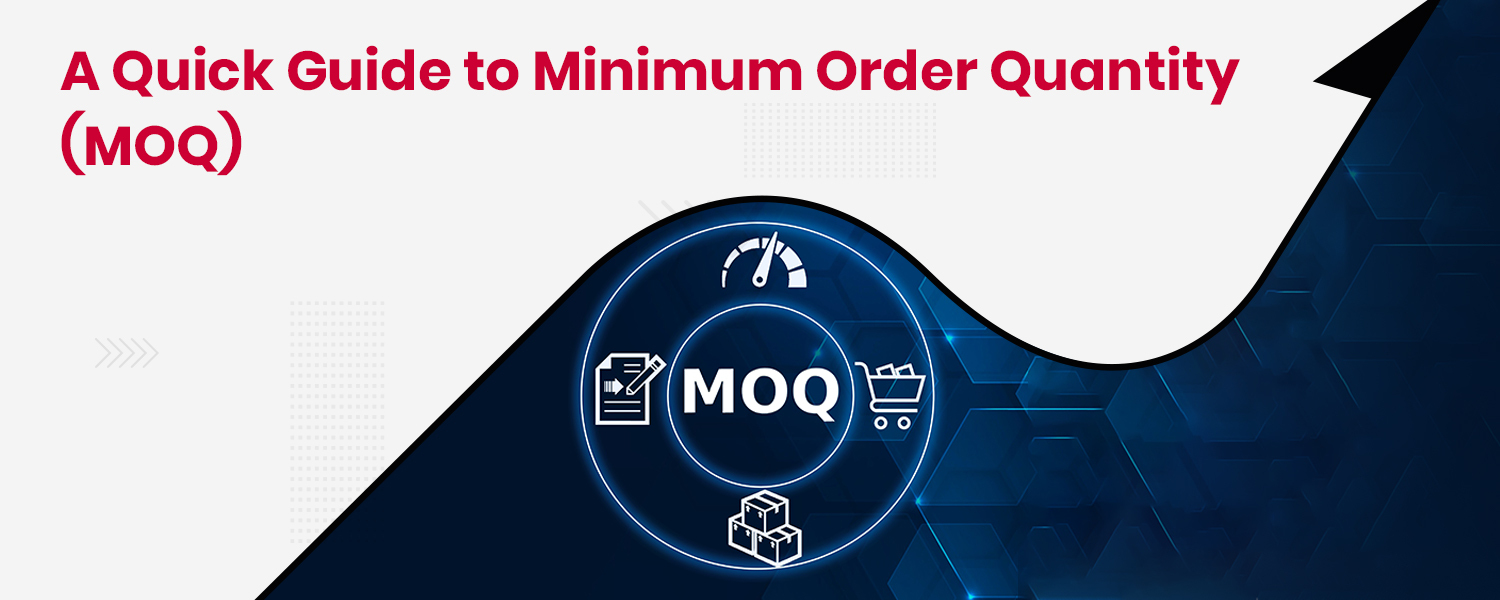Minimum Order Quantity (MOQ) is a pivotal but often overlooked pillar in the world of eCommerce and retail that dictates the smallest amount of product a business is willing to sell to its customers in one go.
It is a game of numbers and nuances. In this blog, we’ll dive deep into what MOQ is, dissect how it is calculated, and present different strategies to transform this complex concept into a robust tool for your eCommerce business’s success.
Understanding What MOQ is
MOQ refers to the lowest quantity of a particular product that a supplier is willing to sell to a retailer or a customer at one time. Both parties must agree upon a quantifiable baseline threshold to proceed with a transaction. This is not just a number pulled from thin air but a carefully calculated figure that ensures the supplier’s costs are covered and a profit is secured, safeguarding the economic viability of every sale.
MOQ can be expressed as a specific number of units or monetary value. For example, if a supplier advertises a MOQ of 1,000 units, you must be able to purchase at least 1,000 units to be able to deal with that supplier.
Suppliers set MOQs to leave out orders that cause wasted resources but bring low value or profit. This means that the suppliers may turn away customers unwilling to meet the MOQ.
Calculating MOQ: A Step-by-Step Guide
Determining Demand Through Forecasting
The first step in calculating MOQ is to predict how much of a product will be needed over a given period. The goal is to paint a realistic picture of future demand, which is the bedrock for setting MOQs.
Assessing Holding Costs for Various Products
Once the demand is forecasted, the next step is to evaluate the holding costs. Holding costs include warehousing fees, insurance, taxes, and even the cost of capital tied up in inventory that could have been utilised elsewhere. Accurate assessment of these costs is crucial because they directly impact the financial rationale behind the MOQ.
Identifying the Break-Even Point for MOQ Profitability
The break-even point is where the costs of producing and holding the inventory meet the revenue generated from sales—it’s where profit is neither made nor lost. Calculating this point involves a comprehensive understanding of all the costs of getting the product to market, including production, marketing, shipping, and more.
Setting the MOQ Based on Comprehensive Data Analysis
With demand forecasted, holding costs evaluated, and the break-even point established, it’s time to set the MOQ. The MOQ should be set at a level that ensures supplier profitability while also being realistic about what buyers can manage. It must consider the supplier’s capacity and the buyer’s ability to sell. The final MOQ is a figure that aligns production efficiency with market demand, ensuring a sustainable business model.
Benefits of MOQs include
- Maintaining healthy profit margins.
- Improving inventory control in the supply chain.
- Keeping purchasing costs down.
- Minimizing administration and ordering costs.
- Low risk of stockouts.
Strategies for Optimizing MOQs
Implementing Customer Incentives
The offer of free shipping has a potent psychological effect on consumers. Setting a free shipping threshold just above the average order value can motivate customers to add more items to their cart, effectively increasing the order size. Through market research and understanding consumer behaviour, businesses can set a threshold that incentivizes customers and maintains profitability.
Creating Bulk Purchase Discounts and Product Bundles
Offering discounts for purchasing in volume is a classic strategy to encourage larger orders. By creating tiered pricing, where the unit cost decreases as the quantity purchased increases, businesses can incentivize buyers to meet or exceed MOQs. The discount structure must be carefully designed to maintain a healthy margin while providing an attractive deal for the customer.
Managing Inventory by Removing Slow-Moving Stock
Identifying slow-moving stock is crucial for inventory health. Businesses can pinpoint which items are not performing well by analyzing sales data. Once identified, strategies such as discounts, promotions, or even donations can be employed to move this stock and free up valuable warehouse space.
Leveraging Technology and Automation to Manage MOQs Effectively
Modern ERP and MRP systems offer comprehensive solutions for managing MOQs in the supply chain management. These systems can integrate various aspects of a business’s operations, providing real-time data that helps make informed purchasing decisions.
Conclusion
In the final analysis, MOQs are not merely a business’s stipulation but a strategic fulcrum upon which businesses can pivot to gain a competitive edge. A comprehensive understanding of MOQs can unlock efficiencies in warehouse inventory management, cost control, and resource allocation.
For larger gains, by utilizing NimbusPost’s smart warehouse & fulfilment centres, businesses are better positioned to respond to market demands with agility in eCommerce logistics, ensuring that they can capitalize on opportunities without being weighed down by surplus stock or hamstrung by inadequate supply.
FAQs
What is the difference between MOQ and EOQ?
MOQ stands for Minimum Order Quantity. It is the smallest number of items a supplier will accept for an order. In contrast, EOQ stands for Economic Order Quantity. It is the optimal number of products that should be ordered to meet customer demand while minimizing storage and ordering costs.
What is the EOQ method?
Economic Order Quantity (EOQ) Formula:
EOQ = √ [2DS/H]
D = Demand in units (annual)
S = Order cost
H = Holding costs (per unit, per year)




